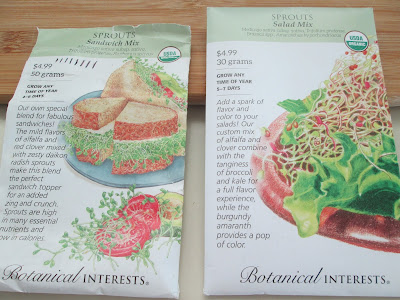Blue Butterly Pea showed up on my radar in 2019 while visiting Thailand on the way home from a month in Nepal. On previous trips to Thailand, I had seen no evidence of it, but suddenly every tourist restaurant was advertising Blue Butterfly Pea drinks and even making blue rice with it. During our past covid years, the fad seems to have made its way here to Hawaii. It shows up on Facebook groups and I have seen plastic containers of flowers being sold at the Kapiolani Farmers Market. When I enquired about them, I was told that the Waikiki bars buy them to make blue drinks.
 |
About a year ago I was delighted to see a Blue Butterfly Pea vine growing by the lanai of a local restaurant. And it had mature seed pods on it! All gardeners will understand the next step, and now I have two beautiful vines growing on a chain link fence. I get great pleasure at seeing the perky blue flowers as I go out my kitchen door. It has been educational to watch their growth. This plant likes to spread out and the vines stretch out to reach ti plants or bushes to grow up and over them. Something to think about as you decide where to plant them. It may need those twining tips cut back to keep it under control. The flowers only last one day and within a few days you will see the narrow 4" pods forming.
As pretty as this vine is, the main reason people grow the Blue Butterfly Pea is to use the flowers to make tea. It has an ancient history in India as a health-giving plant. Even in our modern times, we know that blue foods from nature have health giving antioxidants. I will let you google all the health claims for it on the internet. A plant that gives both health and beauty seems like a good one to have in the garden. It takes several flowers steeped in boiling water to give the health filled blue tea. It has no taste so is usually combined with lemon grass on lemon juice to make it more interesting. Some combinations with acidic drinks can make purple to pink variations for fun. You can find videos of it on You Tube. I add one flower every day to my afternoon green tea. I make the tea in the morning then keep it in the refrigerator for an ice drink later when I will also add a squeeze of lemon. Not enough flowers to turn the tea blue but I figure it is an easy daily habit I can stay with. I have discovered that the flowers will stay fresh and open for several days if picked in the morning and put in the fridge in a Tupperware container lined with a damp paper towel. Who knows? Maybe you can make some pocket money selling them to a nearby Thai restaurant or bar.
Blue Butterfly Pea is a perennial vine that is native to tropical Asia. It really likes to sprawl out and can easily take up 10 feet of width on your trellis. It is not over fussy about soil, but it does need good drainage. It can be grown from cuttings but is easily grown from seed. Wait until the seed pods have turned brown on the vine. The seedlings start popping up in a week and are ready for transplanting in three. I have noticed the Bulbuls (fruit loving birds) eating a few flowers but so far, they have left plenty of flowers still on the vine. The recent salt winds of winter got at the leaves a bit, but the vines are protected from the worst by the house. My vine is in semi shade, and I does seem to prefer that as I have heard that vines in full sun can struggle during dry times.
Aloha, and Merry Christmas
PS Jan. 2022
I see in the newspaper today an article about blue mochi being the new big thing in Japan. The blue is coming from this Blue Butterfly Pea flower.
July 2022
Have just realized that there is also a White Butterfly Pea form of this flower. Not sure if it has the same health benefits. I would guess that the blue color gives something extra.
January 2023
I was thrilled to see a big black carpenter bee sipping nectar from my Blue Butterfly Pea flowers the other day. They pollinate the passion fruit so I always want to attract them to my garden.
December 2024
One of my plants just recently died. I am not sure if this is just the natural short life of this plant or it succumbed to all the strong salty winds we have had lately. The other plant is rather struggling too. I have plenty of stored collected seeds if I want to grow new ones.






































